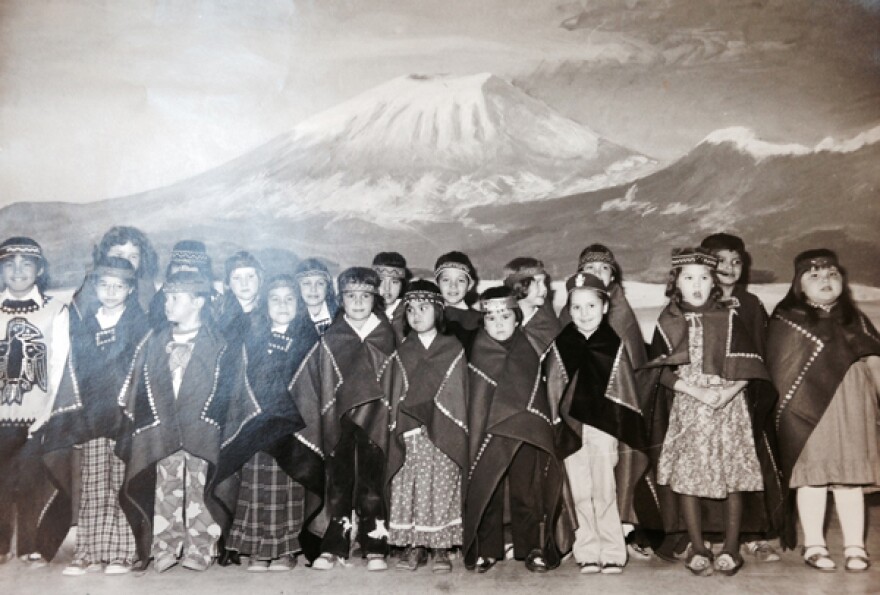Dancing can be a celebration, an expression of joy or sorrow, or a way to tell a story. For one man in Sitka, it's a way to teach people about his Native culture and values, and to carry on his tradition. With elders in the community growing older or already gone, he says it's his responsibility to learn and pass along the teachings to the younger generation so they grow up proud to be Tlingit.
Chuck Miller is teaching 2nd and 3rd graders how to perform traditional Haida-style men’s and women’s dances.
Miller is the youth program coordinator at the Sitka Native Education Program. It’s an after-school program where kids and teens learn Native dance, song, and language. Students are called Gajaa Héen Dancers. Miller attended the program when he was a kid and says dancing makes him feel connected to his culture.
“When I dance, it feels like my ancestors are running through my veins,” said Miller. “When you put your robe on, it’s like you’re putting on your teachers. You’re putting on your ancestors. You feel them on you. You’re embracing them. It’s like you’re walking into a warm hug.”
Miller grew up in Sitka and became a Gajaa Héen Dancer when he was just 3 years old. As a child, he was surrounded by elders and mentors who taught him the traditional Tlingit ways of doing things. He says that when Alaska became a part of the United States, the Tlingit culture suffered.
“That’s just the way history happened to us,” said Miller. “A lot of the people went through boarding schools, and it wasn’t okay to speak Tlingit language. They beat it out of you. Or the families back at home would say, ‘we’re stepping into the white man’s world. You can’t speak your Tlingit language anymore. We want you to adapt to the culture that’s prominent here.’”
So, in 1974, Isabella Brady started the Sitka Native Education Program. She, along with other cultural leaders in the community, wanted to instill a sense of cultural pride in the younger generation, so they would grow up to hold and pass on the Tlingit teachings.
“The vision of the elders was, ‘Our culture is going to die,’” said Miller. “We need to do something now. We need to get these young people together.”
Miller remembers the words of the elders. “They would have elders come and talk to us and they would always say to everyone one of us, ‘and you folks will be the leaders one day.’ It’s true. It’s coming around.”
Heather Powell is the education director of the Sitka Native Education Program. She also attended the program growing up and says being a Gajaa Héen Dancer should not be taken lightly.
“For us, it’s a very very big responsibility to carry those songs,” said Powell. “To dance those dances, with respect, with knowledge, and with knowing where they come from, who do they belong to. Giving those pieces of our history that tie us to those songs, to those places, to those names.”
Both Miller and Powell have embraced the leadership role. Powell says that Tlingit songs and dance teach students about Native traditional values and how to live by them.
Oleana Valley is 15 years old and a Gajaa Héen Dancer. “I just love it,” she said. “I’m just so passionate about it. It’s just like, one of my favorite things to do. It makes me super happy.”
Valley says it helps her forget her everyday worries and that the songs they sing are personal. “Stuff that we sing in songs is more about telling stories. They’re really deep, so it’s kind of like a privilege for people to hear songs like that. It’s like reading someone’s journal.”
With so many elders getting older, Miller says it’s more important than ever to learn as much as they can before the elders are gone. He calls himself an elder-in-training. “Now, more and more of them are leaving,” he said, “it’s like, whoa, whoa, whoa, it’s like an encyclopedia is getting burned right in front of us and it’s the last copy.”
Miller continues to learn and teach as much as he can, so that the Tlingit culture will continue to grow stronger and carry on long after he’s gone.




